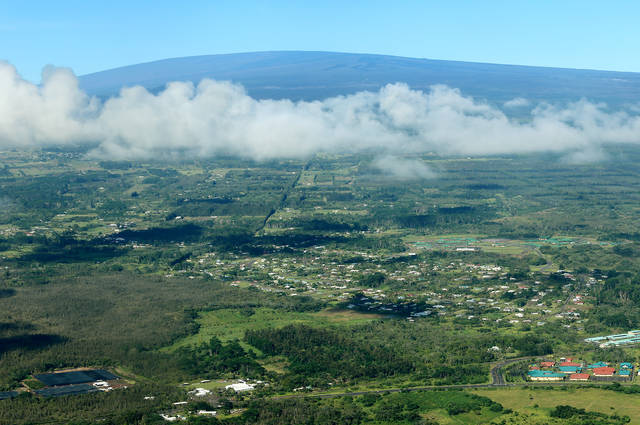The Hawaii Volcano Observatory is monitoring Mauna Loa closely as the volcano shows signs of increasing activity following the Kilauea eruption.
“The most important thing is that there is no cause for alarm,” said HVO scientist-in-charge Tina Neal. However, she added, activity surrounding Mauna Loa has risen to levels comparable to a higher period of activity between 2014 and 2017.
Those signs of higher activity include increased earthquakes and ground deformation around the volcano’s summit. Neal said the volcano has experienced up to 90 earthquakes a week since August, although most of the quakes have been mild, measuring 2.0 or less on the Richter scale.
Neal said earthquakes on Mauna Loa dropped to less than five a week around early 2018. HVO’s alert status level for Mauna Loa dropped from “Advisory” to “Normal” around that time, and it remains at that level to this day.
As for ground deformation, Neal said deformation rates appear similar to how they were in the volcano’s more active period starting in 2014, but are not as high as the highest deformation rates during that time, when some parts of the volcano measured approximately 5 cm of deformation in a year.
Mauna Loa’s renewed activity comes shortly after the cessation of significant volcanic activity around Kilauea, whose alert status sits at “Normal.” The Kilauea eruption last year also began shortly after a decrease in volcanic activity at Mauna Loa.
Neal said there is no “perfect correlation” between the two volcanoes’ activity — that is, there is no guarantee that one volcano will become more active as the other becomes less so. However, she added, there is some geological basis to suggest such a pattern, meaning that it could stand to reason that Mauna Loa is stirring now because Kilauea has fallen silent.
“But, this [new activity] would test that hypothesis,” Neal said.
Neal said further observation of Mauna Loa will help geologists understand how the Kilauea eruption affected Mauna Loa. The eruption changed the pressure relationship between the volcanoes, she said, and the effects of that have yet to be studied.
Neal also said that gas monitoring equipment at Mauna Loa summit has not detected any fumes emerging from the volcano.
Neal said it is too early to predict what Mauna Loa’s new activity means for the future.
“An eruption could be anywhere from months to years away,” Neal said. “But we do know that it’s not days or weeks away.”
Email Michael Brestovansky at mbrestovansky@hawaiitribune-herald.com.

